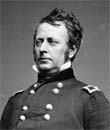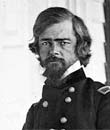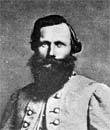
Day-by-Day Timeline of Events
January 1, 1862
The Confederate commissioners captured on the British steamer Trent continue their voyage to Europe - ending the "Trent Affair".
January 1, 1862
Union General John Schofield pens a letter to his soldiers to refrain from destruction, plunder and theft of civilian property.
January 9, 1862
David G. Farragut, a Union Flag Officer, is given command of the Western Gulf Blockading Squadron.
January 14, 1862
"Battle Hymn of the Republic" is published for the first time, this in the New York Herald Tribune.
January 19, 1862
Union forces are victorious over the Confederates at Logan Cross Roads (Mill Springs) in Kentucky.
January 22, 1862
In an effort to raise enlistment numbers, the Confederate government announces an increase to the enlistment bonus to $50 (from $10).
January 27, 1862
In an effort to stir General McClellan to action, President Lincoln announces a deadline of February 22 for an all-out advance of Union forces against confederate positions.
January 1, 1862
A disagreement between Secretary of War Judah Benjamin and General Thomas "Stonewall" Jackson nearly leads to the resignation of the talented general. Jackson ultimately wins the showdown.
February 4, 1862
The price of saltpeter, compounds needed for the manufacture of gunpowder, is raised to 0.40 cents per pound by Confederate Secretary of War Judah Benjamin.
February 4, 1862
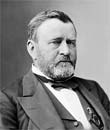
February 5, 1862
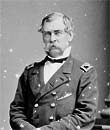
February 6, 1862
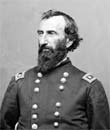
February 6, 1862
At 11:00AM, General Smith's forces begin their march against Fort Heiman along the Tennessee River.
February 6, 1862
Union Flag Officer Foote leads his gunboat flotilla against Fort Henry. The action takes place from 11:00AM until about 1:55PM and is in concert with land movements of General McClernand and General Smith under General Grant.
February 6, 1862
At 6:00PM on this date, General Grant's troops finally claim (through occupation) Fort Henry on the Tennessee River.
February 6, 1862
Fort Henry, along the Tennessee River in Tennessee, falls to forces under the combine efforts of land and naval forces under the direction of General Grant. He then turns his attention eastward towards enemy-held Fort Donelson along the Cumberland River.
February 8, 1862
The Union Navy is victorious over Confederate forces at Roanoke Island in North Carolina.
February 8, 1862
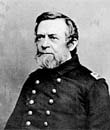
February 10, 1862
Confederate forces of the "Mosquito Fleet" fall to elements of the Union Navy near Elizabeth City, North Carolina as part of the Battle of Elizabeth City. The Mosquito Fleet was originally in service to the state and later passed to the Confederate Navy.
February 11, 1862
General Grant orders an advanced force to begin their march towards Fort Donelson.
February 12, 1862
Despite the combined strength of General McClernand and Smith's divisions, General Grant is forced to stop within twelve miles of Fort Donelson as he remains outnumbered.
February 13, 1862
West Virginia authorities pass a law that restricts slaves and people of color from being given permanent residency.
February 13, 1862
Forces under the command of Union General Ulysses S. Grant begin their attack to take Fort Donelson along the Tennessee River.
February 13, 1862
Without order from General Grant, both General McClernand and General Smith launch unsuccessful attacks against Fort Donelson.
February 14, 1862
Under heavy and accurate fire, Union Flag Officer Foote's gunboat floatilla are repelled by the guns of Fort Donelson.
February 14, 1862
Union forces under Lew Wallace arrive at Fort Donelson from Fort Heiman and are further reinforced by fresh troops transport via the river Cumberland. With three divisions now formed under General Grant, he holds numerical superiority against the defenders at Fort Donelson.
February 16, 1862
Union General Grant is victorious at Fort Donelson along the Tennessee River in Tennessee. 14,000 prisoners are taken after the General demands an "unconditional and immediate surrender" of the enemy.
February 17, 1862
General Ulysses S. Grant is promoted to the rank of Major General (of volunteers) (from the rank of Brigadier General).
January 17, 1862
To award wartime service going above-and-beyond the norm, a motion to create the nation's first "Medal of Honor" passes a hurdle in Senate voting.
February 20, 1862
Willie Lincoln, son of the President of the United States, succumbs to fever at the age of eleven.
February 20, 1862
Union Captain David Farragut arrives outside of New Orleans, Louisiana with his naval forces in tow. He takes up position at Ship Island near Biloxi, Mississippi. This is part of the campaign to retake the strategically important port city.
February 20, 1862
The Battle of Valverde begins pitting 3,000 union troops against 2,590 confederates in New Mexico Territory. Confederate General Henry Hopkins Sibley leads with General Thomas Green against Edward Canby. They are supported by Texas cavalry as well as land militia forces.
February 22, 1862
The Confederate government officially swears in permanent authorities in the capital of Richmond, Virginia.
February 22, 1862
Camp Morton in the state of Indianapolis receives its first batch of Confederate Prisoners of War (PoW).
February 22, 1862
Andrew Johnson is announced as military governor by President Lincoln over Union-held territories of Tennessee.
February 28, 1862
The Battle of Island Number Ten (New Madrid, Missouri) begins. Union forces are led by John Pope and Andrew Footer against Confederate foes headed by John McCown and William Mackall. Six Union gunboats are aided by eleven mortar rafts, facing a Confederate force of 7,000.
March 3, 1862
General N.H. McLean in St. Louis, Missouri declares that all Confederate supporters will be hung "...as robbers and murderers..."
March 6, 1862
To assuage Union border states, President Lincoln pushes for compensation to slave owners who end up losing their slaves.
March 6, 1862
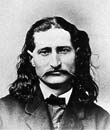
March 8, 1862
The Battle of Pea Ridge ends as a Union victory. 1,384 Union personnel are killed against 2,000 Confederate losses.
March 8, 1862
In a naval encounter at Hampton Roads, Virginia, USS Cumberland and USS Congress fall to the confederate warship CSS Virginia.
March 8, 1862
Union cavalry forces near Nashville, Tennessee, under the command of Colonel John H Morgan conduct a series of raids on enemy positions.
March 8, 1862
In the Battle of Hampton Roads, Virginia, CSS Virginia tangled with Union Navy forces n an effort to help unseat the Blockade.
March 9, 1862
In waters off of Hampton Roads, Virginia, CSS Virginia squares off against USS Monitor in naval history's first duel between two ironclad warships. The engagement ends in a draw.
March 9, 1862
At 7:00AM CSS Virginia departs Norfolk and heads to Hampton Roads to finish off USS Minnesota.
March 9, 1862
CSS Virginia is met by USS Monitor in what would come to be known as the "Battle of the Monitor and the Merrimack". Merrimack was the former name of CSS Virginia prior to her conversion as a Confederate ironclad.
March 9, 1862
Fighting between USS Monitor and CSS Virginia continues until 12:15PM at which point CSS Virginia withdraws. The battle, for all its importance to both sides, is labeled indecisive as little headway is made for either party. The Battle of Hampton Roads is over.
March 10, 1862
Confederate General Joseph Johnson pulls his forces out of Manassas, wary of the threat posed by General McClellan's forces in the area.
March 11, 1862
Having grown tired of General McClellan's inaction to this point in the war, President Lincoln moves to take the General's title of General-in-Chief away. McClellan continues to lead as commander of the Army of the Potomac.
March 13, 1862
General Robet E. Lee begins his term as a military adviser to Confederate President Jefferson Davis.
March 14, 1862
The Battle of New Bern is had in Craven County, North Carolina. 11,000 Union soldiers are supported by fourteen gunboats against a Confederate Army showcasing 4,000 troops and single cavalry regiment. The result is a Union victory with minimal losses on both sides.
March 14, 1862
New Bern, North Carolina falls to a combined Union land-naval force led by General Ambrose Burnside.
March 15, 1862
To better handle the ongoing war situation covering Florida, Georgia and South Carolina, Union authorities establish the Department of the South.
March 17, 1862
Union General George McClellan begins marching his army towards the Confederate capital of Richmond, Virginia.
March 23, 1862
At a battle site in Kernstown, Virginia, Confederate forces led by Stonewall Jackson are repelled.
March 23, 1862
Union General Benjamin Butler arrives at Ship Island, Mississippi to join in the plans for the ultimate battle to take New Orleans.
March 23, 1862
The First Battle of Kernstown (Winchester, Virginia) is had. This one-day engagement sees a Union force numbering between 6,350 and 9,000 against a Confederate force of 3,000 to 4,200. Both sides gain the advantage as the Union claim a tactical victory and the Confederates a strategic one. Casualties number 590 for the North and 718 for the South.
March 26, 1862
The Battle of Glorieta Pass is fought between 1,300 Union troops and 1,100 Confederates. The engagement is a two-day affair spanning from March 26th until March 28th and leads to a Union Victory in northern New Mexico Territory.
April 1, 1862
Confederate military authorities revoke all leave permissions due to the growing war commitment - with particular attention being paid to manpower availability.
April 4, 1862
Gneeral John Pope's Union forces at New Madrid, Missouri, complete the construction of a canal intended to bypass Confederate firepower along the Mississippi River at Island Number Ten.
April 4, 1862
The Peninsular Campaign begins under the leadership of Union General George McClellan (Army of the Potomac). The target is the Confederate capital of Richmond, Virginia. By April 30th, Union forces will number 115,350 strong against an estimated force of up to 100,000 Confederates.
April 5, 1862
General McClellan's Army of the Potomac begins the siege of Confederate-held Yorktown in Virginia.
April 6, 1862
The Battle of Shiloh begins in Hardin County, Tennessee. Union generals Ulysses S. Grant and Don Buell lead a force of some 63,000 against 40,335 Confederates led by generals Beauregard and Albert Johnston.
April 7, 1862
The Battle of Shiloh ends in a Union victory. 13,047 Union soldiers are killed along with 10,699 Confederate soldiers.
April 7, 1862
Island Number Ten along the Mississippi River, south of New Madrid, Missouri, is given up by the defending Confederate garrison.
April 8, 1862
The Battle of Island Number Ten draws to a close as the Union claims the victory. Some 7,000 Confederates surrender in the aftermath.
April 10, 1862
Once again President Abraham Lincoln is forced to plead for General McClellan to move to action in Virginia - comparing the current offensive with what was witnessed at Manassas some time earlier.
April 11, 1862
Fort Pulaski in Georgia falls to Union forces. The forts strategic placement at the mouth of the Savannah River made it important for both sides.
April 12, 1862
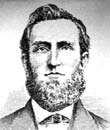
April 16, 1862
Running short of new recruits, the Confederate government installs conscription for white males aged 18 to 35. A three-year commitment is required.
April 16, 1862
Following the abolition of slavery in Washington, D.C., Congress pushes through a measure to compensate former slave owners in the D.C. area.
April 21, 1862
The Confederate Congress completes its round of latest meetings at Richmond, Virginia.
April 21, 1862
With Union forces making headway towards Richmond, Virginia, the Confederate Congress gathers in an emergency session.
April 24, 1862
The Confederate fleet near New Orleans, Louisiana is destroyed by a Union force under the command of Flag Officer David Farragut.
April 24, 1862
CSS Stonewall Jackson, launched in January of 1862, is driven ashore and burned and pressured by Union Navy elements.
April 25, 1862
With no more fight left, Confederate forces surrender the important port city of New Orleans to Union elements.
April 28, 1862
Confederate elements at Fort St. Philip and Fort Jackson (New Orleans) surrender to Union forces.
April 30, 1862
Stonewall Jackson's forces are joined by elements under the command of Major General Richard S. Ewell at Conrad's Store
May 3, 1862
General Jackson orders his men to depart the Shenandoah Valley in a ruse to trick Union observers. They soon return to the region by rail.
May 3, 1862
A Union reconnaissance balloon, ordered airborne by General McClellan takes fire from enemy forces.
May 4, 1862
General McClellan's forces take Yorktown, Virginia. Land mines are first experienced here.
May 4, 1862
This date marks the official start of the Shenandoah Valley Campaign directed by Stonewall Jackson.
May 5, 1862
The Battle of Williamsburg occurs with inconclusive results for both sides. General McClellan leads Union forces against General Johnston and Longstreet. Casualties total 2,283 for the North and 1,682 for the South.
May 6, 1862
To face off against Union General John C. Fremont, Stonewall Jackson combines forces with Brigadier General Edward Johnson at Staunton, marching west to meet the enemy.
May 8, 1862
On this date the Battle of McDowell occurs - a one-day engagement pitting 6,500 Federals against 6,000 Confederates. Stonewall Jackson leads the latter and the battle goes down as a Confederate victory. Losses total 2,59 for the North and 420 for the South. Brigadier General Robert Milroy commanded the North.
May 9, 1862
Confederate forces leave their positions at Norfolk and relocate to the capital of Richmond to bolster defenses there.
May 10, 1862
With Confederate forces having retreated out of Norfolk, Virginia, Union forces move in and claim the important seaside town.
May 5, 1862
A Confederate river fleet voyages out of Memphis, Tennessee and meet a Union squadron - Southern forces are repelled in the ensuing battle.
May 10, 1862
A naval engagement is fought four miles up river from Fort Pillow in Tennessee with the Confederates claiming the victory.
May 11, 1862
CSS Virginia, no longer able to operate as a true ironclad and relegated to heavy battery duty, is scuttled at Hampton Roads.
May 11, 1862
After having run aground near Craney Island, Virginia, CSS Virginia is set alight by her crew.
May 12, 1862
Having chased Union forces off north of Franklin (West Virginia), Stonewall Jackson turns back towards the Shenandoah Valley.
May 13, 1862
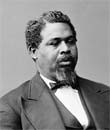
May 14, 1862
Despite numerical superiority, General McClellan stops his advancing Union troops 20 miles outside of the Confederate capital of Richmond, Virginia, to await inbound reinforcements.
May 15, 1862
Confederate guns at Drewry's Bluff turn back the James River Flotilla approaching Richmond. The squadron had managed to reach within 8 miles of the Confederate capital city.
May 15, 1862
Per General Butler's order, any woman insulting Union troops in New Orleans is to be treated as a prostitute.
May 18, 1862
Thomas Jackson returns to the Shenandoah Valley en route to meet Union General Nathaniel P. Bank's force. He reaches Mount Solon, Virginia.
May 20, 1862
Jackson by-passes General Bank's force by way of the southeast side of Massanutten Mountain and up the Luray Valley.
May 20, 1862
The Homestead Act is signed into law by President Lincoln. This is arranged to encourage western migration for settlers and offered to those who have not gone against the Union.
May 23, 1862
On this date, General Jackson engages Union forces in the Battle of Front Royal. The engagement ends as a Confederate victory with 773 Union elements killed to just 36 Confederates. John Reese Kenly commanded the North garrison. The action now threatens supply lines to General Bank's forces.
May 5, 1862
The First Battle of Winchester is had. Confederate Thomas Jackson is victorious over the Union forces led by Nathanial Banks. Banks had retreated to Winchester and was met by Jackson, who ultimately was able to secure victory and the town itself.
May 27, 1862
Union General Banks retreats with his forces across the Potomac Rover with Thomas Jackson in hot pursuit. This ends the first phase of the Shenandoah Valley Campaign and claims several victories for the South.
May 27, 1862
The Battle of Hanover Courthouse in Hanover County, Virginia takes place. It is a Union victory under Fitz John Porter over counterpart Lawrence Branch.
May 30, 1862
Falling to Union pressure, General Beauregard orders a withdrawal from Corinth, Mississippi.
May 30, 1862
Union forces are back in Front Royal, Virginia in the hopes of reclaiming captured forces.
June 1, 1862
Robert E. Lee concludes his term as military adviser to Confederate President Jefferson Davis.
June 1, 1862
The Battle of Seven Pines (Battle of Fair Oaks) ends as an inconclusive victory. Confederate General Joseph Johnston is badly wounded. Casualties amount to 6,134 Confederates against 5,031 Union fighters.
June 1, 1862
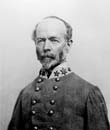
June 6, 1862
Memphis, Tennessee is surrendered by Confederate forces following a running naval battle.
June 8, 1862
The Battle of Cross Keys is had pitting a Union force of 11,500 led by General Fremont against 5,800 Confederates under General Ewell. The result is a Confederate victory with 664 Union casualties versus 287 Confederates.
June 9, 1862
Union forces are driven back at Port Republic in Virginia during the one-day engagement known as the Battle of Port Republic. Union losses count 1,002 against the Confederate's 816.
June 15, 1862
Confederate General Jeb Stuart completes his raiding against General McClellan's forces in Virginia.
June 16, 1862
The Battle of Secessionville takes place in Charleston, South Carolina. It is a Confederate victory by Nathan Evans and Thomas Lamar. Union General Henry Benham, who had violated orders in the engagement, is arrested
June 24, 1862
Construction on a canal is started by Union engineers along the Mississippi River near heavily-defended Vicksburg. General Thomas Williams directs.
June 25, 1862
The Seven Days Battles are begun - six major engagements spanning seven days and pitting forces of General McClellan against forces of General Robert E. Lee. It marks a Confederate victory though losses are heavy for both sides. the battles take place around the Confederate capital of Richmond, Virginia near Oak Grove.
June 26, 1862
The Battle of Beaver Dam Creek - also Battle of Mechanicsville - is fought between General McClellan and General Robert E. Lee. Losses total 361 for the Union and 1,484 for the Confederates. However, the Union can only claim a tactical victory. This is the second battle of the Seven Days Battles.
June 6, 1862
The Army of Virginia (formerly the Army of the Potomac) is now handed to General John Pope per President Lincoln's order.
June 27, 1862
The third contest of the Seven Days Battles is fought during the Battle of Gaine's Mill. It is a Confederate victory by Robert E. Lee over McLellan.
June 27, 1862
The Union Army of the Cumberland is now under the direction of General William Rosecrans.
June 27, 1862
With General Beauregard having fallen ill, General Braxton Bragg is appointed his replacement over the Army of Tennessee.
June 27, 1862
The fourth installment of the Seven Days Battles is fought during the Battle of Garnett's and Golding's Farm. It results as inconclusive and neither side fail to make headway. Losses are minimal by the war's standard - 189 Union elements to the Confederate's 438.
June 28, 1862
Union Navy boats pass under the guns of Vicksburg to reach friendly forces up the Mississippi River.
June 29, 1862
The Battle of Savage's Station, the fifth of the Seven Days Battles, is fought. It is another inconclusive engagement with the Union suffering 1,038 casualties against the Confederate's 473. Sumner led the Union forces against Magruder. Union forces withdraw.
June 30, 1862
The Battle of White Oak Swamp - as part of the Seven Days Battles - of fought and marks another inconclusive victory. Union General Franklin leads against Stonewall Jackson. Losses are minimal for both sides.
July 1, 1862
The Seven Days Battles draw to a close. Casualties total 18,849 for the Union and as many as 20,100 for the Confederates. It is a Confederate victory nonetheless as General McClellan's forces fail to make progress. It makes the culmination of the Peninsular Campaign.
July 1, 1862
The Battle of Booneville is fought at Booneville, Mississippi. Losses are light for both sides with the Union claiming the victory.
July 1, 1862
A 5000-strong Confederate cavalry assault is repulsed by a much smaller Union force of 827 with Colonel Philip Sheridan in command.
July 2, 1862
The United States Congress passes a law forcing oaths to the Union cause to be given by governmental and military officials.
July 5, 1862
The Battle of Lebanon takes place in Lebanon Kentucky. As many as 400 Union troops face off against 2,460 Confederates. The battle goes down as a Confederate victory.
July 7, 1862
Under the direction of Union General Benjamin Butler, William Mumford is hanged in New Orleans for his April removal of an American flag.
July 11, 1862
General Henry W. Halleck is appointed General-in-Chief over Washington, D.C. by President Lincoln.
July 11, 1862
Confederate cavalry forces, under the command of Colonel John Morgan, take Lebanon, Kentucky.
July 13, 1862
Murfreesboro, Tennessee is taken by Confederate cavalry forces under the command of General Nathan Bedford Forrest.
July 16, 1862
For the first time in US Naval history, the rrank of Rear Admiral is attained - the honor given to David Farragut.
July 17, 1862
The First Battle of Cynthiana is had in Cynthiana, Kentucky. Confederate General John Morgan and his raiders are victorious in taking the town as well as its defending Union garrison.
July 17, 1862
The Second Confiscation Act is passed by the United States Congress. The act frees those slaves owned by southern supporters.
July 18, 1862
Newburgh, Indiana is captured by General Adam "Stovepipe" Johnson. In what became known as the "Newburgh Raid", Johnson was able to convince defending Union forces that his army was of considerable size though, in reality, it numbered twelve men and had two joints of stovepipe fitted to a wagon to simulate a cannon.
July 31, 1862
From a position at Coggin's Point in Virginia, Confederate guns manage little damage against Union warships located near Harrison's Landing.
August 5, 1862
Confederate General Henry Allen is wounded in the Battle of Baton Rouge, leading to his left leg being amputated. He will later be named governor of Confederate Louisiana.
August 5, 1862
The Battle of Baton Rouge takes place on this date. Forces include 2,500 Union against 2,600 Confederate. The battle goes down as a Union victory with similar losses to both sides (371 and 478 respectively).
August 5, 1862
Confederate Captain Alexander Todd is killed in fighting near Baton Rouge, Louisiana. Todd is the brother-in-law of sitting President Abraham Lincoln. He is also the victim of friendly-fire.
August 5, 1862
After developing mechanical issues, CSS Arkansas is abandoned on the Mississippi River and blown up by Confederate forces near Baton Rouge, Louisiana.
August 8, 1862
Stonewall Jackson's forces cross the Rapidan River just north of Gordonsville to head off Union general Pope and his forces.
August 9, 1862
Stonewall Jackson's forces are victorious over Union troops at Cedar Mountain, Virginia.
August 9, 1862
Nathaniel Banks' Union forces manage several victories before being driven back by Stonewall Jackson's forces.
August 11, 1862
General Jackson pulls his troops back across the Rapidan River for fear of arriving Union reinforcements.
August 13, 1862
Allowed to work on the front lines by Union authorities, Clara Barton - founder of the Red Cross - attends to both friendly and enemy troops in the field. She would be present at the battles of Second Bull Run, Antietam and Fredricksburg thereafter.
August 13, 1862
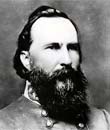
August 18, 1862
Union General Pope is forced back over the Rappahannock River due to growing Confederate pressure.
August 22, 1862
J.E.B. Stuart's Confederate cavalry forces raid around Catlett's Station (Virginia) and capture 300 Union troops, detailed plans and supplies.
August 26, 1862
Franklin Buchanan is granted the position of Admiral within the Confederate Navy - the highest rank attainable for the service.
August 26, 1862
Stonewall Jackson and his forces are able to pass between Washington, D.C. and the army of General Pope.
August 27, 1862
Ewell's division is ordered to Bristoe Station by Stonewall Jackson to delay Pope's arriving troops.
August 28, 1862
The Second Battle of Bull run is had over a two-day period, beginning on August 28th and ending on the 30th. Confederate forces are under the command of Robert E. Lee with Union troops directed by John Pope. The battle results in a Confederate victory.
August 28, 1862
The Second Battle of Bull Run officially begins. Confederate shelling is heard at 6:30PM. The action takes place around Brawner's Farm (Groveton).
August 29, 1862
Stonewall Jackson's forces hold Stony Ridge. First contact between the two sides on this day is had at 7AM.
August 30, 1862
General Longstreet's force, under Major General Richard Anderson and having arrived on the battlefield at 3AM, enacts a counterattack that ultimately pushes Union elements to retreat.
August 30, 1862
The Second Battle of Bull Run ends as a considerable Confederate victory (as did the first). The Confederate forces were outnumbered man-to-man but managed significant casualties against the enemy.
September 1, 1862
The Battle of Chantilly (Virginia) - also known as "Ox Hill" - takes place. It ends inconclusively as both sides fail to gain the initiative. Casualties number 1,300 Union and 800 Confederate. The battle marks the end of the Northern Virginia Campaign that includes Second Bull Run.
September 2, 1862
Union General Pope orders his forces to retreat to the outskirts of Washington, D.C.
September 2, 1862
Union General John Pope is relieved of command of the Army of Virginia by order of President Lincoln.
September 2, 1862
General George McClellan is appointed by President Lincoln to succeed outgoing General Pope as leader of the Army of Virginia.
September 2, 1862
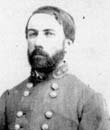
September 4, 1862
Near Leesburg, Virginia, the Army of Northern Virginia begins its crossing along the Potomac River.
September 5, 1862
General Lee makes his first foray into a Union state - crossing the Potomac River and entering Maryland.
September 5, 1862
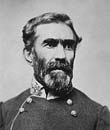
September 5, 1862
CSS Alabama captures the Ocmulgee in the Azores. This marks the Confederate vessel's first claim of a commercial vessel. The enemy ship is burned while its crew is taken prisoner.
September 7, 1862
General George McClellan begins a slow advance away from Washington, D.C. to meet the Confederate threat emerging from Virginia.
September 9, 1862
Special Orders 191 is given by General Lee, ordering a special column formation to be taken by his troops to increase the chances of overtaking Harpers Ferry and the Union forces garrisoned there.
September 11, 1862
General Lee assigns General Longstreet to guard the approaches from the north while General Hill is given the task of the defending the approaches from the south of Harpers Ferry.
September 11, 1862
General Jackson engages Union forces at Martinsburg and drives them back towards Harpers Ferry.
September 12, 1862
The Battle of Harpers Ferry begins. Generals Miles and White lead a Union force of 14,000 against some 26,000 Confederate attackers under the command of generals Stonewall Jackson and A.P. Hill.
September 13, 1862
The Army of the Potomac arrives at Frederick, Maryland. Once there, soldiers recover a copy of General Lee's plans.
September 13, 1862
Captured Confederate plans are given over to Union General McClellan - who suspects the plans are a trap.
September 14, 1862
The Battle of South Mountain takes place. It is a Union victory for General McClellan, General Burnside and General Franklin over General Lee and General Hill.
September 14, 1862
The Battle of Crampton's Gap (Burkittsville) is a Union victory for General Franklin over General Cobb. Forces number 12,800 to 2,100, respectively.
September 14, 1862
The Battle of South Mountain is had in Maryland leading to a Union victory. 28,000 Union troops square off against 18,000 Confederates. Losses for both sides are nearly equal.
September 14, 1862
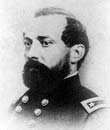
September 15, 1862
General Jackson's forces open up with artillery strikes against Union forces at Harpers Ferry.
September 15, 1862
A Confederate division under the command of General John Walker takes Loudoun Heights.
September 16, 1862
Confederate General Bragg claims Munfordville, Kentucky. Those Union defenders still alive are taken prisoner.
September 16, 1862
Having suffered a mortal wound at the Battle of Harpers Ferry, General Dixon Miles dies.
September 17, 1862
The Battle of Antietam is had near Sharpsburg, Maryland and results of the one-day engagement are tactically inconclusive. 87,164 Union troops (led by McClellan) face off against 38,000 Confederates (led by Lee). Casualties are 12,410 and 10,316 respectively.
September 17, 1862
Union forces at Cumberland Gap, Tennessee are driven away by the Confederates, leaving the remaining garrison to fend for itself.
September 19, 1862
The Union Army claims a victory at the Battle of Iuka, driving off the now-retreating Confederates. The battle takes place near Iuka, Mississippi and involves 4,500 Union and 3,179 Confederates.
September 20, 1862
Union forces attempt to take General Lee's army at Blackford's Ford after crossing the Potomac but are driven back.
September 22, 1862
President Lincoln's Emancipation Proclamation is set to take effect on January 1st, 1863. The proclamation covers only those slaves in Confederate-governed states but excludes those border states supporting the Union.
September 25, 1862
Union warships bombard Confederates at Sabine City, Texas. The defenders are driven away.
September 26, 1862
In an effort to boost the Confederate economy and broaden its base of allies, the Committee on Foreign Affairs calls on President Jefferson Davis to open Southern markets and waterways to Northwest states.
September 27, 1862
The First Regiment Louisiana Native Guards is formed. It marks the first Union Army regiment made up entirely of free blacks.
September 27, 1862
Confederate conscription is extended and now includes men from the ages of 35 to 45.
September 29, 1862
Union General William Nelson is shot and killed by fellow Union General Jefferson C. Davis following an argument between the two men. Davis is later court-martialed.
September 30, 1862
The First Battle of Newtonia is had in Newtonia, Missouri. 1,500 Union forces face a brigade of Indians which results in a Confederate victory.
October 3, 1862
Union forces gain the upper hand against the Confederates at Corinth, Mississippi. The battle marks one of the few uses of the bayonet charge in the whole of the war.
October 4, 1862
The Confederates place Richard Hawes as the unofficial governor of the state of Kentucky. The inauguration takes place in Frankfort.
October 8, 1862
The Battle of Perryville is had in Boyle Country, Kentucky. It pits 22,000 Union against 16,000 Confederates and results in a Union strategic victory. Losses are 4,241 and 3,396 respectively.
October 10, 1862
Stonewall Jackson is promoted to the rank of Lieutenant General and now heads 2nd Corps (Army of Northern Virginia)
October 11, 1862
The Confederate Conscription Act is amended to exclude those managing twenty or more slaves.
October 13, 1862
General John Pemberton is named General of the Department of Mississippi, Tennessee and East Louisiana.
October 13, 1862
The Confederate Congress ends its latest round of meetings in the capital of Richmond, Virginia.
October 22, 1862
Confederate troops take their positions at the now-abandoned Cumberland Gap garrison in Tennessee.
October 22, 1862
Union forces are driven off by defending Confederates at Yemassee in South Carolina.
October 26, 1862
General McClellan leads his forces over the Potomac River into neighboring Virginia.
October 28, 1862
The 79th U.S. Colored Infantry Regiment from Kansas is the first black regiment to see combat for Union forces. It is involved in clashes at Island Mounds, Missouri.
October 30, 1862
Union General Buell, head of the Army of the Cumberland, is replaced by General Rosecrans.
November 1, 1862
Across the Atlantic, Napoleon III of France calls on European allies to help end the bloody war in America.
November 3, 1862
CSS Cotton and shoreline guns at Berwick Bay, Louisiana, drive away Union naval forces.
November 3, 1862
Union ground forces, aided by five gunboats, attack Confederate positions at Bayou Teche in Louisiana.
November 5, 1862
General Ambrose Burnside replaces General George McClellan as commander of the Army of the Potomac per President Lincoln's request.
November 5, 1862
General Wade Hampton's forces are driven out of Barbee's Crossroads in Virginia by Union cavalry under the command of General Alfred Pleasonton.
November 17, 1862
The British ambassador to Washington, D.C. delivers a message to British leaders indicating that Democrats are interested in ending the war despite any potential state losses to the Union.
November 21, 1862
Union General Edwin Sumner calls for Confederate forces to surrender Fredricksburg.
November 23, 1862
New Orleans is home to a large show of force as tens of thousands of infantry are paraded through the streets.
November 24, 1862
General Joseph Johnston is appointed as commander of the Army of the West by President Davis.
November 28, 1862
General Wade Hampton directs a cavalry raid at Hartwood Church in Virginia against Union forces and captured nearly 100 men.
November 28, 1862
Cane Hill, Arkansas is site to a modest clash of forces. The Union claims the victory.
November 29, 1862
Following Union General Philip Kearny's death at the Battle of Chantilly in September of 1862, the Kearny Medal for Officers is established.
December 1, 1862
Abraham Lincoln addresses the U.S. Congress. In his speech, he declares openness to allowing freed slaves the option to resettle in other countries.
December 7, 1862
The Battle of Prairie Grove is had in Washington County, Arkansas. The one-day clash is a Union victory.
December 7, 1862
The Union garrison at Hartsville, Tennessee falls to cavalry led by Colonel John Morgan.
December 7, 1862
CSS Alabama is forced to release a captured steamer carrying 640 persons, including 140 Union troops, as it lacks the facilities to take them on.
December 10, 1862
Dumbries, Virginia is raided by Confederate cavalry attached to General Wade Hampton's forces.
December 11, 1862
Fredericksburg, Virginia is bombarded by artillery under General Burnside's direction.
December 11, 1862
General Burnside's Union forces cross the Rappahannock River to reach Fredericksburg, Virginia.
December 11, 1862
The Battle of Fredericksburg begins encompassing actions in Spotsylvania and Fredericksburg counties. The clashes pit a much smaller Confederate force of 78,513 against 122,009 Union troops. Commanders are General Lee (Confederate) against General Burnside (Union).
December 12, 1862
USS Cairo is sunk by an electrically-detonated Confederate naval mine. The action takes place at Yazoo River near Haines Bluff, Mississippi.
December 13, 1862
A Confederate cavalry raid into Dumbries, Virginia yields a wagon train and fifty prisoners for the attackers.
December 13, 1862
General Burnside's larger force is beaten by General Lee's Army of Northern Virginia as part of the Battle of Fredericksburg.
December 14, 1862
Union General Benjamin Butler is relieved of command of the Department of the Gulf by General Nathaniel Banks.
December 15, 1862
The Battle of Fredericksburg ends as a Confederate victory. Confederate numbers are 78,513 committed to action with losses numbering 4,201. Union numbers are 122,009 committed with 12,653 losses.
December 16, 1862
Beginning on December 16th, 1861 and running into the New Year, cavalry raids led by Confederate General Nathan Bedford Forrest across eastern Tennessee are had.
December 17, 1862
General Grant forces out all merchant Jews under his district control due to Treasury violations (black market dealings involving cotton). This is known as General order No.11 and includes Jews in Tennessee, Mississippi and Kentucky.
December 23, 1862
To dissuade further involvement of free blacks in Union ranks, the government of the South decrees that any captured freed slaves fighting under the Union banner face prosecution under local laws. This includes both punishment and execution for fighting the South.
December 23, 1862
Confederate President Davis makes a call to label Union General Benjamin Butler an "outlaw" in response to Butler's earlier message regarding New Orleans' women.
December 25, 1862
Union forces destroy the railway network at Vicksburg, Mississippi accessing both Louisiana and Texas.
December 25, 1862
The Confederate "Christmas Raid" cavalry raid into Kentucky begin under the leadership of General John Morgan.
December 26, 1862
In a speech to Mississippi lawmakers, President Davis details Northern aggression and violations of southern women and property.
December 26, 1862
J.E.B. Stuart heads cavalry raids against Dumphries, Virginia, netting 200 prisoners. The raids span from December 26th into December 31st.
December 26, 1862
Union forces are beaten back at Chickasaw Bayou in Vicksburg, Mississippi. This two-day engagement marks the Battle of Chickasaw Bayou. Again, a much smaller Confederate force bests a larger Union army. The battle spans into December 29th.
December 28, 1862
Confederate General John Morgan completes his cavalry "Christmas Raid" venture into Kentucky.



